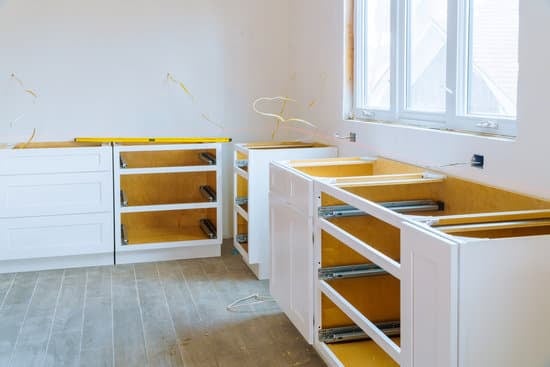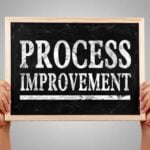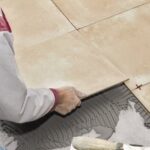Are you considering making upgrades to your home but unsure of the costs? In this article, we will explore the question, “How much does a home improvement loan cost?” Understanding the basics of home improvement loans is essential before diving into any major renovations. With various types of loans available and factors to consider, it’s crucial to assess the total expenses involved in borrowing for home improvements.
Exploring the options for home improvement loans is a crucial step in making informed decisions about financing your renovation project. Whether it’s a personal loan, home equity line of credit (HELOC), or a cash-out refinance, each type comes with its own set of advantages and drawbacks.
Before applying for a home improvement loan, there are several factors to consider. Your credit score, current financial situation, and the total cost of your renovation project will all play a role in determining which loan option is best suited for your needs.
As we delve deeper into this topic, we will also explore how interest rates and fees can impact the overall cost of a home improvement loan. By assessing these costs upfront, you can better understand the financial implications of borrowing for your home improvements.
The Different Types of Home Improvement Loans
When it comes to home improvement loans, there are several options available to homeowners. One of the most common types is a home equity loan, which allows homeowners to borrow against the equity in their homes. Another option is a home equity line of credit (HELOC), which also uses the equity in the home as collateral but operates more like a credit card with a variable interest rate.
For homeowners who don’t have significant equity built up in their homes, an unsecured personal loan could be an option for financing home improvements. These loans do not require any collateral, but they typically come with higher interest rates and shorter repayment terms compared to secured loans.
Another popular choice is a cash-out refinance, where homeowners can refinance their mortgage for more than they currently owe and receive the difference in cash. This option allows homeowners to take advantage of lower interest rates on a new mortgage while still accessing funds for renovations.
Exploring these different types of home improvement loans is crucial for homeowners looking to fund their renovation projects. Each type of loan has its own requirements, benefits, and drawbacks, so it’s important to carefully consider which option best suits your financial situation and renovation needs.
| Types of Home Improvement Loans | Description |
|---|---|
| Home Equity Loan | Borrow against the equity in your home |
| Home Equity Line of Credit (HELOC) | Similar to a credit card with a variable interest rate |
| Unsecured Personal Loan | No collateral required but higher interest rates |
| Cash-Out Refinance | Refinancing for more than you owe and receiving the difference in cash while taking advantage of lower interest rates on a new mortgage |
Factors to Consider Before Applying for a Home Improvement Loan
Before applying for a home improvement loan, there are several factors that you should take into consideration. One of the most important factors is your credit score. Lenders use your credit score to determine whether or not you qualify for a loan and what interest rate you will be offered. It’s essential to have a good credit score in order to secure favorable terms for your home improvement loan.
Another key factor to consider is the amount of equity you have in your home. The amount of equity you have will impact the maximum amount of money you can borrow, as well as the interest rates available to you. Typically, the more equity you have, the better terms you can expect on your loan.
In addition, it’s important to carefully consider how much money you actually need for your home improvement project. Be sure to thoroughly evaluate the cost of the project and factor in any unexpected expenses that may arise. Borrowing more money than necessary can lead to higher monthly payments and more interest paid over time.
| Factor | Consideration |
|---|---|
| Credit Score | Have a good credit score |
| Equity | Consider amount of equity in home |
| Borrowed Amount | Evaluate actual need for funds |
Assessing the Costs
When applying for a home improvement loan, it is important to assess the costs associated with it, particularly the interest rates and fees. The interest rate on a home improvement loan can vary depending on the lender, your credit score, and the current market conditions. It’s important to shop around and compare rates from different lenders to ensure that you are getting the best possible deal.
In addition to interest rates, it’s also crucial to consider any fees associated with the loan. This may include origination fees, closing costs, or prepayment penalties. These additional costs can significantly impact the overall cost of the loan, so it’s important to factor them into your decision-making process.
Before committing to a specific home improvement loan, carefully review all of the terms and conditions to understand the total cost of borrowing. Some loans may have variable interest rates or teaser rates that increase over time, so be sure to calculate the potential long-term costs as well. By thoroughly assessing both interest rates and fees, you can make an informed decision about which home improvement loan is right for you.
Pros and Cons of Getting a Home Improvement Loan
Advantages of Getting a Home Improvement Loan
One of the primary advantages of getting a home improvement loan is that it provides homeowners with the necessary funds to make necessary upgrades or repairs to their homes. This can increase the value of the property and improve the overall quality of living for the residents. Additionally, home improvement loans often come with lower interest rates compared to personal loans or credit cards, making them a more affordable option for financing larger projects.
Another benefit of home improvement loans is that they offer fixed interest rates and predictable monthly payments, making it easier for homeowners to budget and plan for the cost of the loan. This stability can provide peace of mind and financial security, especially when compared to using credit cards or other forms of high-interest debt to fund home renovations.
Disadvantages of Getting a Home Improvement Loan
On the flip side, there are also potential downsides to getting a home improvement loan. One consideration is that taking on additional debt through a loan can put strain on a homeowner’s finances, especially if they are already managing other debts such as mortgages or car loans. It’s crucial to carefully evaluate whether adding another monthly payment is feasible without causing financial hardship.
Furthermore, some home improvement loans may require collateral, such as the borrower’s home equity, which puts the property at risk if payments are not made as agreed. Additionally, borrowers with less-than-perfect credit may face higher interest rates or difficulty qualifying for favorable loan terms, making it important to assess individual financial circumstances before pursuing this type of financing option.
How to Calculate the Total Cost of a Home Improvement Loan
When considering a home improvement loan, it’s important to have a clear understanding of the total cost involved. This includes not only the principal amount borrowed but also the interest rates and fees associated with the loan. Calculating the total cost of a home improvement loan can help borrowers make informed decisions and avoid any unexpected financial burdens down the line.
Understanding Interest Rates
One of the key components in calculating the total cost of a home improvement loan is the interest rate. This is the percentage of the principal amount that lenders charge as interest for borrowing money. It’s crucial to compare different lenders and their interest rates to determine which option best fits your financial situation.
Evaluating Fees and Charges
In addition to interest rates, there may be other fees and charges associated with a home improvement loan. These could include origination fees, application fees, prepayment penalties, and closing costs. It’s essential to factor in these additional expenses when calculating the total cost of the loan, as they can significantly impact its affordability.
Using Loan Calculators
To simplify the process of calculating the total cost of a home improvement loan, borrowers can utilize online loan calculators. These tools allow you to input specific details about your loan, such as the principal amount, interest rate, and term length, and provide an estimate of your monthly payments and overall costs.
This can be invaluable in helping you make well-informed decisions about your borrowing needs. By using these resources along with researching different lender options thoroughly, borrowers can gain clarity on how much a home improvement loan will truly cost them over time.
Tips for Finding the Best Home Improvement Loan Rates
When looking for the best home improvement loan rates, there are several tips to consider in order to secure the most favorable terms for your financial situation. Here are some useful tips to help you find the best rates:
- Compare offers from multiple lenders: Different lenders may offer varying interest rates and fees, so it’s important to shop around and compare offers from several financial institutions.
- Improve your credit score: A higher credit score generally leads to lower interest rates on loans. Take steps to improve your credit score before applying for a home improvement loan.
- Consider secured loans: Secured loans, such as home equity loans or home equity lines of credit (HELOC), often come with lower interest rates compared to unsecured personal loans.
Additionally, it’s essential to carefully review and understand all the terms and conditions associated with each loan offer. This includes paying attention to any potential fees, prepayment penalties, and repayment options. By taking the time to research and compare different loan options, you can make a more informed decision about which lender offers the best rates for your home improvement project.
Alternatives to Home Improvement Loans
If you’re considering making improvements to your home, but are not sure if a home improvement loan is the right choice for you, there are alternatives to consider. Before making a decision, it’s important to explore all of your options and determine which one best aligns with your financial situation and goals. Here are some alternatives to home improvement loans:
- Personal Savings: Using your personal savings to fund home improvements can be a cost-effective option since you won’t have to pay interest on a loan. However, this option may not be feasible for everyone, especially for larger or more expensive projects.
- Credit Cards: If the cost of your home improvements is relatively low, using a credit card with a low interest rate or a promotional 0% APR offer can be a convenient option. Keep in mind that carrying a balance on the credit card could result in high-interest fees if not paid off quickly.
- Home Equity Line of Credit (HELOC): A HELOC allows homeowners to borrow against the equity in their homes and use the funds for various purposes, including home improvements. This option typically offers lower interest rates than personal loans or credit cards and may be tax-deductible under certain circumstances.
Before deciding on an alternative to a home improvement loan, it’s important to carefully assess your financial situation and consider the long-term impact of each option. Each alternative has its own benefits and drawbacks, so take the time to weigh them against your specific needs and goals before making a decision. Whatever option you choose, ensure that it aligns with your budget and overall financial plan.
Conclusion
In conclusion, home improvement loans can be a great option for homeowners looking to make upgrades or renovations to their property. However, it’s crucial to carefully consider the total cost of the loan before applying. This includes factoring in interest rates and any additional fees that may be associated with the loan. By understanding the potential costs involved, borrowers can make informed decisions about whether a home improvement loan is the right choice for their financial situation.
When assessing the costs of a home improvement loan, it’s important to shop around and compare rates from different lenders. By doing so, borrowers can find the best possible terms and potentially save money in the long run. Additionally, considering alternative options such as personal loans or home equity lines of credit may also provide more favorable terms for some individuals.
Overall, taking the time to thoroughly research and assess the costs associated with a home improvement loan is essential for making a sound financial decision. With careful consideration and planning, homeowners can take on remodeling projects with confidence, knowing that they have selected the most cost-effective financing option available to them. Making informed decisions about home improvement loan costs will ultimately lead to successful and financially responsible renovation projects.
Frequently Asked Questions
Are Home Improvement Loans a Good Idea?
Home improvement loans can be a good idea for homeowners who need to make significant updates or repairs to their property but don’t have the cash on hand to do so. These loans provide a way to fund these projects without having to dip into savings or retirement funds.
However, it’s important for borrowers to carefully consider the terms and interest rates of these loans to ensure they are making a financially sound decision.
What Is the Average Length of a Home Improvement Loan?
The average length of a home improvement loan can vary depending on the lender and borrower’s preferences. Typically, these loans can range from as short as one year to as long as 20 years.
The length of the loan will also depend on factors such as the amount borrowed, interest rates, and the borrower’s ability to make monthly payments.
Is a Home Improvement Loan Tax Deductible?
In many cases, home improvement loan interest is tax-deductible if the funds were used specifically for home improvements that increase the value of the property. However, it’s essential for borrowers to consult with a tax professional or accountant to determine their eligibility for this deduction based on their individual financial situation and local tax laws.

I’m thrilled to have you here as a part of the Remodeling Top community. This is where my journey as an architect and remodeling enthusiast intersects with your passion for transforming houses into dream homes.





